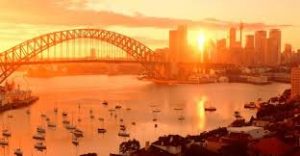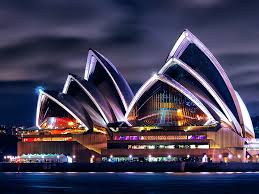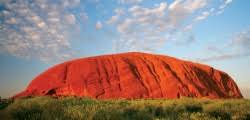James Cook. Discovery of Australia
 On April 29, 1770, the heavy and clumsy ship Endeavor anchored in the waters of a charming bay. Among the team of captain James Cook, who went in search of an unknown southern mainland, in other words, Australia, there was also a scientist – amateur botanist of the Royal Geographical Society Joseph Banks. He was so struck by the picture of dozens of plants that were unknown to science of the time that he had discovered that he persuaded Cook to rename the seemingly named bay. Since then, it has been called the Botanical, that is, Botany Bay.
On April 29, 1770, the heavy and clumsy ship Endeavor anchored in the waters of a charming bay. Among the team of captain James Cook, who went in search of an unknown southern mainland, in other words, Australia, there was also a scientist – amateur botanist of the Royal Geographical Society Joseph Banks. He was so struck by the picture of dozens of plants that were unknown to science of the time that he had discovered that he persuaded Cook to rename the seemingly named bay. Since then, it has been called the Botanical, that is, Botany Bay.
It must be said that the expedition with so many scientists on board went to the expanses of the Pacific Ocean for the first time. In addition to Banks, on board the Endeavor were the Swedish naturalists Solander and Spering, two artists, their assistants – only 11 people. In addition, Cook himself was an excellent cartographer and astronomer. The official reason for the expedition was precisely the observation from Tahiti of the passage of Venus between the Sun and the Earth.
The Endeavor left Plymouth in August 1768. In June of the following year, it reached Tahiti, where the planned observation of celestial bodies took place. It would seem that the task was completed, but at the disposal of Cook was a secret package that ordered him to go further south – up to 40 degrees south latitude. There, the Endeavor team was to search for Terra australis incognita, an unknown southern land.
In search of this continent, James Cook brought his ship to the shores of New Zealand, discovered by Abel Tasman back in 1642. As in the case of the Dutch explorer, the reaction of the indigenous population – the Maori, was extremely hostile. But since the British were ready for such a reception, everything went without loss among the aliens, although several islanders were killed in a skirmish. Cook decided to explore in detail the coastline of New Zealand. As a result of a four-month voyage around the North Island and a seven-week voyage around the South, a surprisingly accurate map of this land was born.
April 1, 1770 “Endeavor” sailed from the shores of New Zealand towards New Holland. A month later, the ship reached the bay, which soon became known as Botany Bay. In his logbook, Cook defined this land as very pleasant in appearance, very diverse and very calm. The ship stood in this harbor for 8 days. During this time, Joseph Banks composed descriptions of many new plants, as well as the mores of the local population, which he could not be attributed to either the Polynesians or the blacks. Aborigines initially hostile to the British, but shots in the air from guns were able to calm them. In the future, no conflicts with indigenous Australians occurred.
A few kilometers north of Botany Bay, James Cook discovered a wide natural passage into a huge natural harbor – Jackson Port. In his report, the researcher described it as an ideal place for the safe parking of many ships. The report was not forgotten and after many years it was here that the first Australian city, Sydney, was founded.
The next four months it took Cook to climb up to the Gulf of Carpentaria, to the area called New Holland. A sailor draws up a detailed map of the coastline of future Australia. Dozens of new names appear on the map – bays, bays, capes, which receive new English names. Ministers and princes, lords, cities, and provinces of Great Britain all gain Australian doubles.
Not quite happily past the great barrier reef, Endeavor finally reaches the northern tip of Australia. Many times the ship was on the verge of destruction, but the skill of the team and the captain usually helped to avoid serious problems. Only once luck turned away from the pioneers. On June 17, Endeavor jumped onto the reef and nearly sank. It happened near the modern city of Cooktown. Repair of the ship lasted seven weeks. And now this place in memory of those distant events is called Cape Tribulation, that is, the cape of misfortune. This place is world famous for its rain forest. This is the only place on the planet where Rhine Forest grows directly into the ocean. The rainforest literally touches its roots with coral reefs.
On August 22, 1770, James Cook, on behalf of King George III, solemnly proclaims the land he explores as British possession and calls it New South Wales. Most likely, this happened because the area in these parts reminded a brave sailor of the coast of Glamorgan in South Wales. With a sense of accomplishment, James Cook sent his ship to Batavia, and then to England, where he was waiting for universal recognition, a meeting with the king and promotion. July 13, 1771 Endeavor reached Plymouth.
Interestingly, Captain Cook did not find fresh water in New South Wales. Apparently, because he did not go deep into the continent. But this served as an occasion to write later in the report, which he compiled upon his return to England, that this land was unsuitable for life. Fortunately, this was the rare case when a famous researcher made a mistake.




